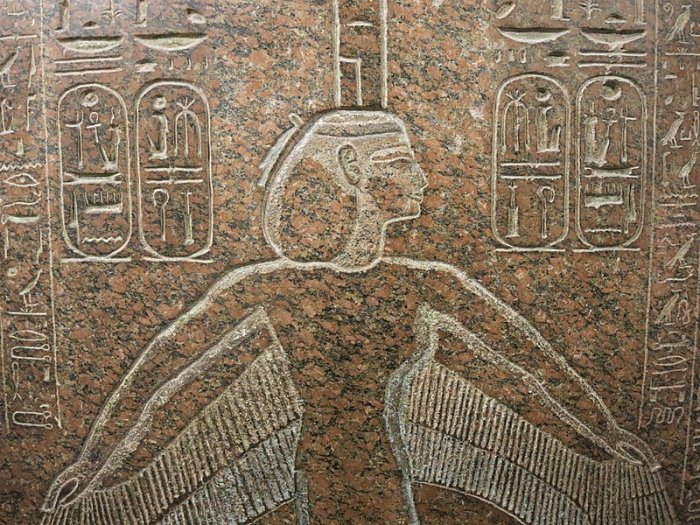Nephthys – Egyptian Funerary Goddess Who Also Protected The Pharaohs While They Were Alive
A. Sutherland - AncientPages.com - Egyptian goddess Nephthys - primarily associated with the myths of Heliopolis - was a funerary goddess and played a lesser role to her sister Isis. Otherwise, nothing is known about her before her appearance in these myths.
Nephthys goddess on the sarcophagus of Ramses III. Credit: Tangopaso - Public Domain
Her Egyptian name is "nebet-hut," which means "mistress of the mansion " However, any specific clue link to her true origin was never given. She was the daughter of Geb that symbolizes the beginning of everything in Egyptian mythology. Geb represented the beginning, fertility, and the earth. On the other hand, Nut was the mother goddess of all gods. Isis and Osiris were twin brothers of Nephthys, who eventually married another of his brothers, Seth.
It is confirmed that Nephtys' reign as an important goddess lasted all the way through the last Egyptian dynasty. It is also important to remember that she was one of the most ancient deities in Egyptian mythology.
In the Osiris myth, Nephtys (Nephthys) was one of the four deities involved in the Osiris myth, where she symbolically represented a partner to the god Seth. At the same time, the goddess Isis was the wife of Osiris. Based on one story, Nephthys had a sexual relation with Osiris, resulting in the birth of Anubis.
However, when Osiris is murdered, Nephthys - morning his death - helps her sister search for him, which is attested in the Pyramid Texts, where the goddess is "the one who floats in a night barge, while her sister Isis, in a day barge").
At first, she participated in the search for his body. Once the body of the murdered Osiris was recovered, both goddesses carried out a rite that allowed Osiris to be brought back to life.
It is believed that the tradition of embalming or mummifying the dead arose as a way to avoid the deterioration of the body of the deceased. Both sisters participated in the embalming of Osiris's body and helped him transit to the afterlife. Nephthys protected his mummy, standing at the head of his bed.
Nephthys was the companion of the god Ra during his night voyage through the underground realms.
As a funerary goddess, Nephthys was one of the most important deities protecting the dead. She was also one of the four divine guardians of the canopic jars and other items in royal and private burials. Due to her role, Isis, Selket, and Nephthys are closely associated with falcons, and their depictions were often shown on coffins in the form of winged women as protectors of the dead.
The two sisters were opposite to each other, like the mysterious death and night. Still, they acted together, and Nephthys was Isis' complement, symbolizing inferiority, infertile lands, and passivity.
Statue of Nephthys goddess at the Louvre Museum. Credit: Public Domain
In her relationship with the god Seth, Nephthys never had a child, and according to the Pyramid Texts, she was known as "the woman who has no vagina." Both Seth and Nephthys symbolized the world's chaos and destruction, while her sister in relationship with Osiris represented order and harmony.
She was depicted as a woman with a hieroglyph of her name on her head, often with two horns. Between them, a disc was placed that referred to this goddess as part of the solar cult. In the engravings of the time, it was located at the head of the deceased.
She had a connection with the Lower World but was also often entitled "The Goddess of Creation who lives in everything." Despite Nephthys' important role in ancient Egyptians' funerary beliefs, however, Nephthys had no temples or any representative cult center of her own.
According to myths and legends, Nephthys was a beautiful deity who protected the deceased and the pharaohs while they were alive and later when they died.
Written by – A. Sutherland - AncientPages.com Senior Staff Writer
Copyright © AncientPages.com All rights reserved. This material may not be published, broadcast, rewritten or redistributed in whole or part without the express written permission of AncientPages.com
More From Ancient Pages
-
 Andlang – Spiritual Heaven And Shelter For The Dead After Ragnarok In Norse Mythology
Featured Stories | Aug 23, 2019
Andlang – Spiritual Heaven And Shelter For The Dead After Ragnarok In Norse Mythology
Featured Stories | Aug 23, 2019 -
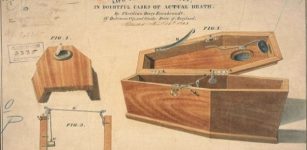 Strange History Of Safety Coffins: From Ancient To Modern Times
Featured Stories | Feb 9, 2016
Strange History Of Safety Coffins: From Ancient To Modern Times
Featured Stories | Feb 9, 2016 -
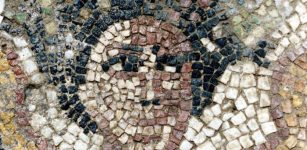 Floors In Ancient Greek Luxury Villa Were Laid With Recycled Glass
Archaeology | Jul 25, 2022
Floors In Ancient Greek Luxury Villa Were Laid With Recycled Glass
Archaeology | Jul 25, 2022 -
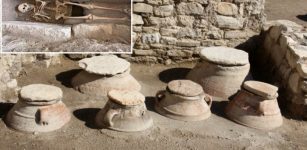 Kadıkalesi Castle Ancient Ruins: Female Skeleton Unearthed At An Archaeological Dig
Archaeology | Jan 9, 2023
Kadıkalesi Castle Ancient Ruins: Female Skeleton Unearthed At An Archaeological Dig
Archaeology | Jan 9, 2023 -
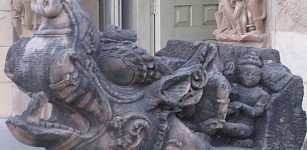 Makara – Legendary Sea-Creature With Many Incarnations In Hindu Mythology
Ancient Symbols | Feb 2, 2020
Makara – Legendary Sea-Creature With Many Incarnations In Hindu Mythology
Ancient Symbols | Feb 2, 2020 -
 Rock-Hewn Ancient Churches Of Lalibela
Civilizations | Aug 22, 2018
Rock-Hewn Ancient Churches Of Lalibela
Civilizations | Aug 22, 2018 -
 ‘Sesselfelsgrotte Cave’ – Innovative Neanderthals Adjusted To Climate Change By Creating More Complex Tools
Artifacts | Aug 31, 2020
‘Sesselfelsgrotte Cave’ – Innovative Neanderthals Adjusted To Climate Change By Creating More Complex Tools
Artifacts | Aug 31, 2020 -
 Ancient Irish Practiced Special Burial Rituals Such As Dismemberment Of Bodies
Archaeology | Sep 18, 2017
Ancient Irish Practiced Special Burial Rituals Such As Dismemberment Of Bodies
Archaeology | Sep 18, 2017 -
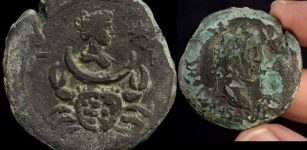 1,850-Year-Old Rare Bronze Coin, Depicting Roman Moon Goddess Luna – Unearthed
Archaeology | Aug 3, 2022
1,850-Year-Old Rare Bronze Coin, Depicting Roman Moon Goddess Luna – Unearthed
Archaeology | Aug 3, 2022 -
 Huge Megalithic 7,000-Year-Old Site Dolmen Of Guadalperal Emerges From Dry Lake In Spain
Archaeology | Aug 22, 2022
Huge Megalithic 7,000-Year-Old Site Dolmen Of Guadalperal Emerges From Dry Lake In Spain
Archaeology | Aug 22, 2022 -
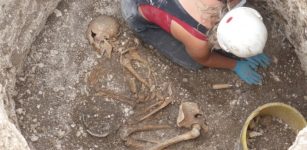 Bronze Age Human Remains Uncovered In Dorset During Excavation Of Iron Age Settlement
Archaeology | Jul 10, 2023
Bronze Age Human Remains Uncovered In Dorset During Excavation Of Iron Age Settlement
Archaeology | Jul 10, 2023 -
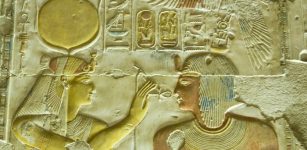 Hathor – One Of Ancient Egypt’s Greatest Female Deities
Egyptian Mythology | Jun 16, 2021
Hathor – One Of Ancient Egypt’s Greatest Female Deities
Egyptian Mythology | Jun 16, 2021 -
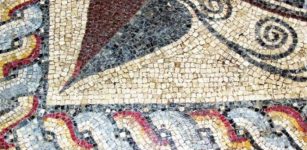 1,800-Year-Old Villa Of Famous Ancient Fisherman Phainos Unearthed In Turkey
Archaeology | Jun 20, 2018
1,800-Year-Old Villa Of Famous Ancient Fisherman Phainos Unearthed In Turkey
Archaeology | Jun 20, 2018 -
 Something Unexpected Stopped Mongol Hordes From Conquering Europe
Featured Stories | Jul 11, 2017
Something Unexpected Stopped Mongol Hordes From Conquering Europe
Featured Stories | Jul 11, 2017 -
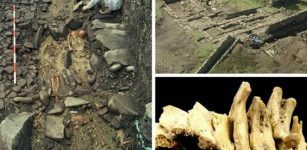 Isle Of May Was A Pictish Healing Center – Monks Used Herbs To Treat Sick And Dying People
Archaeology | Feb 16, 2018
Isle Of May Was A Pictish Healing Center – Monks Used Herbs To Treat Sick And Dying People
Archaeology | Feb 16, 2018 -
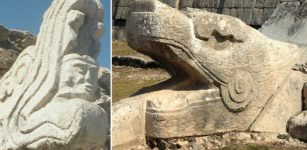 Kukulkan (Quetzalcoatl): Feathered Serpent And Mighty Snake God
Featured Stories | Feb 7, 2017
Kukulkan (Quetzalcoatl): Feathered Serpent And Mighty Snake God
Featured Stories | Feb 7, 2017 -
 Archaeological Discovery Of “Once-In-A-Lifetime” Medieval Gold Necklace In Britain
Archaeology | Dec 6, 2022
Archaeological Discovery Of “Once-In-A-Lifetime” Medieval Gold Necklace In Britain
Archaeology | Dec 6, 2022 -
 Fascinating Discovery Of An Inhabited Underground World In Medieval Wales
Featured Stories | Mar 2, 2024
Fascinating Discovery Of An Inhabited Underground World In Medieval Wales
Featured Stories | Mar 2, 2024 -
 Unraveling The Mystery Of The Phoenix Bird – Symbol Of The Sun And Eternal Rebirth Of Life
Egyptian Mythology | Nov 6, 2023
Unraveling The Mystery Of The Phoenix Bird – Symbol Of The Sun And Eternal Rebirth Of Life
Egyptian Mythology | Nov 6, 2023 -
 Gunung Padang – Remarkable Megalithic Site In Indonesia
Civilizations | Jun 14, 2014
Gunung Padang – Remarkable Megalithic Site In Indonesia
Civilizations | Jun 14, 2014

